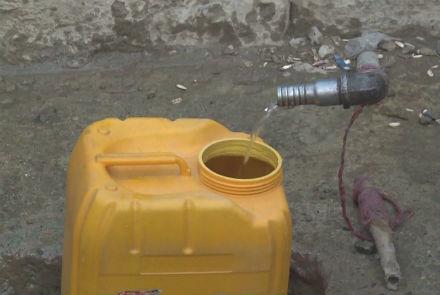Kabul, a city with an estimated six million population, is faced with a “severe” lack of water following a 50 percent drop in rainfalls last year, officials and residents acknowledged.
Residents said their access to water is getting limited day-by-day as according to them the underground water level is dropping every year.
In a city with no rivers, the Kabul residents use underground water as the main source to afford their daily need for the lifesaving element.
Back in July, the National Disaster Management Authority (ANDMA) warned that underground water reserves in Kabul will dry up within the next 10 years as according to the authority, the demand and use of water is increasing in the capital city.
The ANDMA said 32 million cubic meters of water is used from Kabul’s underground water reserves every year while the capacity of the city’s water is 29 million cubic meters in a year.
There are 213,000 wells in Kabul City, the ANDMA figures show.
“Four to five years ago, Kabul’s underground water reserves level was high and the access to water was easy, but now, it is difficult to have access to underground water. The government-owned water supply services are active three to four hours a day while it was active 24/7 four years ago,” said Sayed Ali, a Kabul resident.
“In some areas, people pay high prices for water,” said Sohdaba, a Kabul resident.
Other residents said the problem requires a serious attention by government.
“Government should pay serious attention to this issue and should resolve it ‘as soon as possible’,” said Khalilullah, a Kabul resident.
ANDMA’s statistics reveal that around two million people in the country – mainly in northern and western provinces – suffered from severe drought this year.
The ANDMA deputy chief Mohammad Almas Sayas said a large amount of Afghanistan’s waters flow to neighboring countries which is one of the mainreasons behind lack of water in parts of the country.
“Afghanistan’s waters are not managed and they flow to neighboring countries. This is a big reason behind lack of water,” Sayas said.
Recently, the United Nations said that $115 million is needed to address the suffering and challenges raised from drought in Afghanistan.


